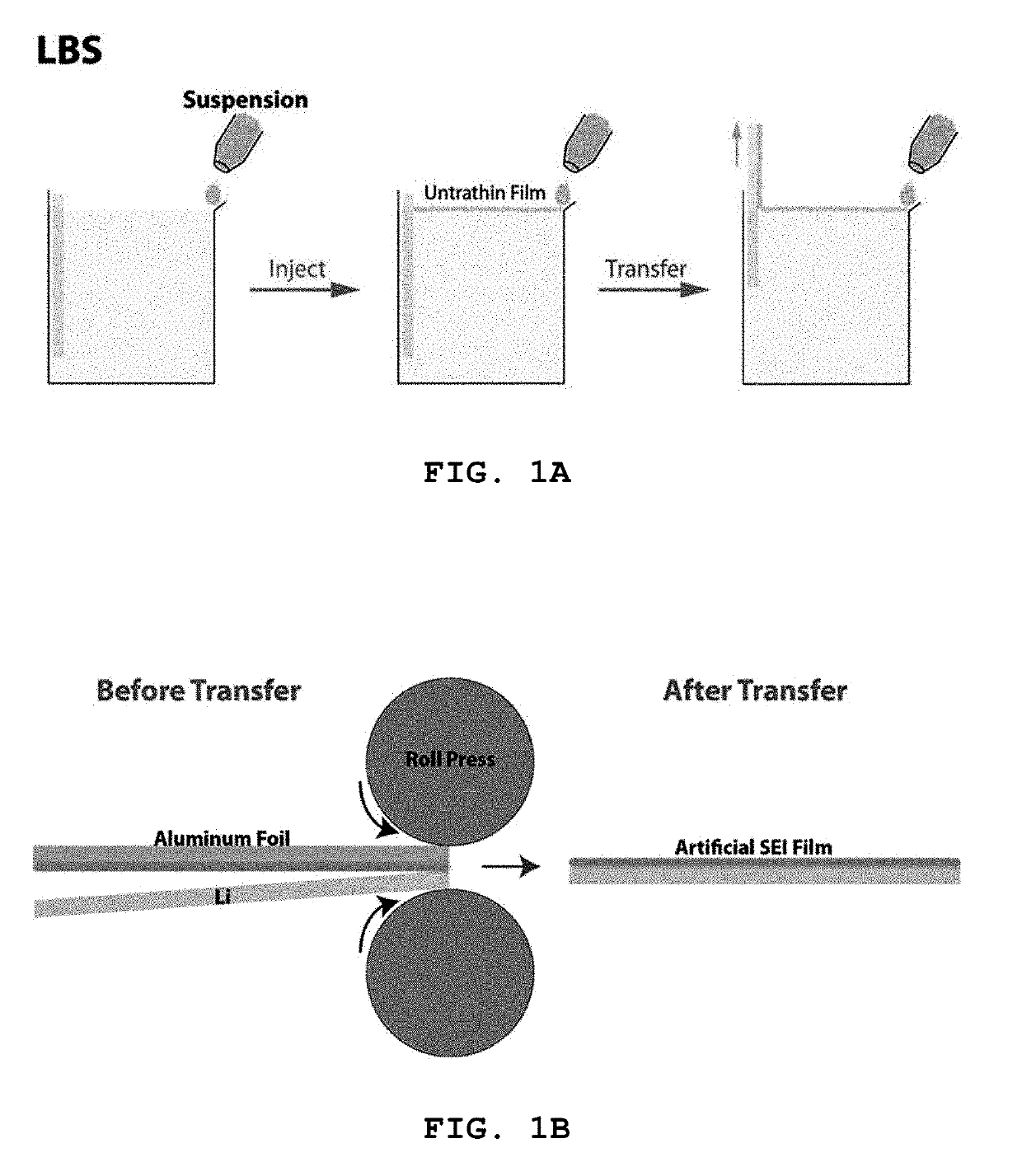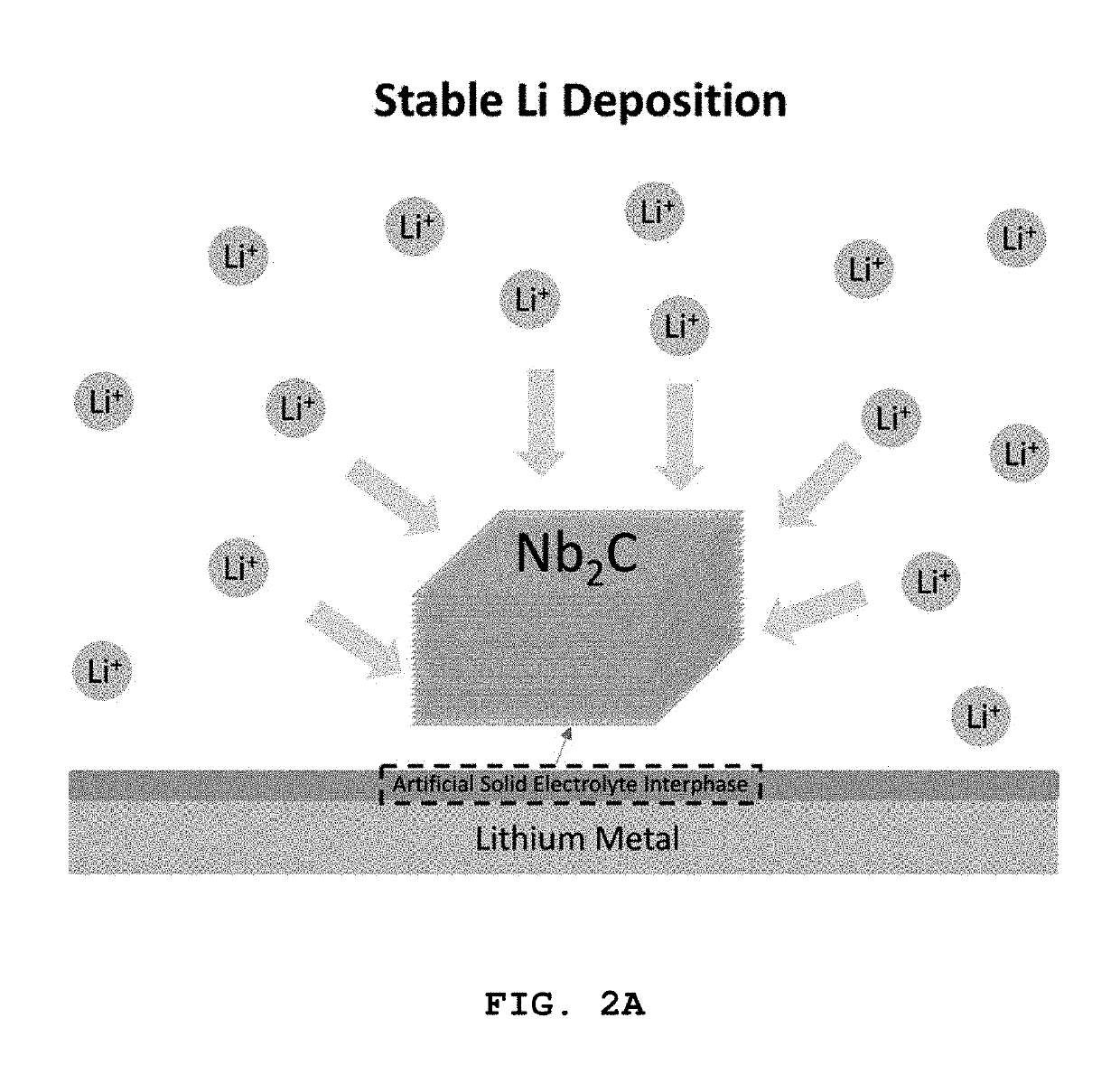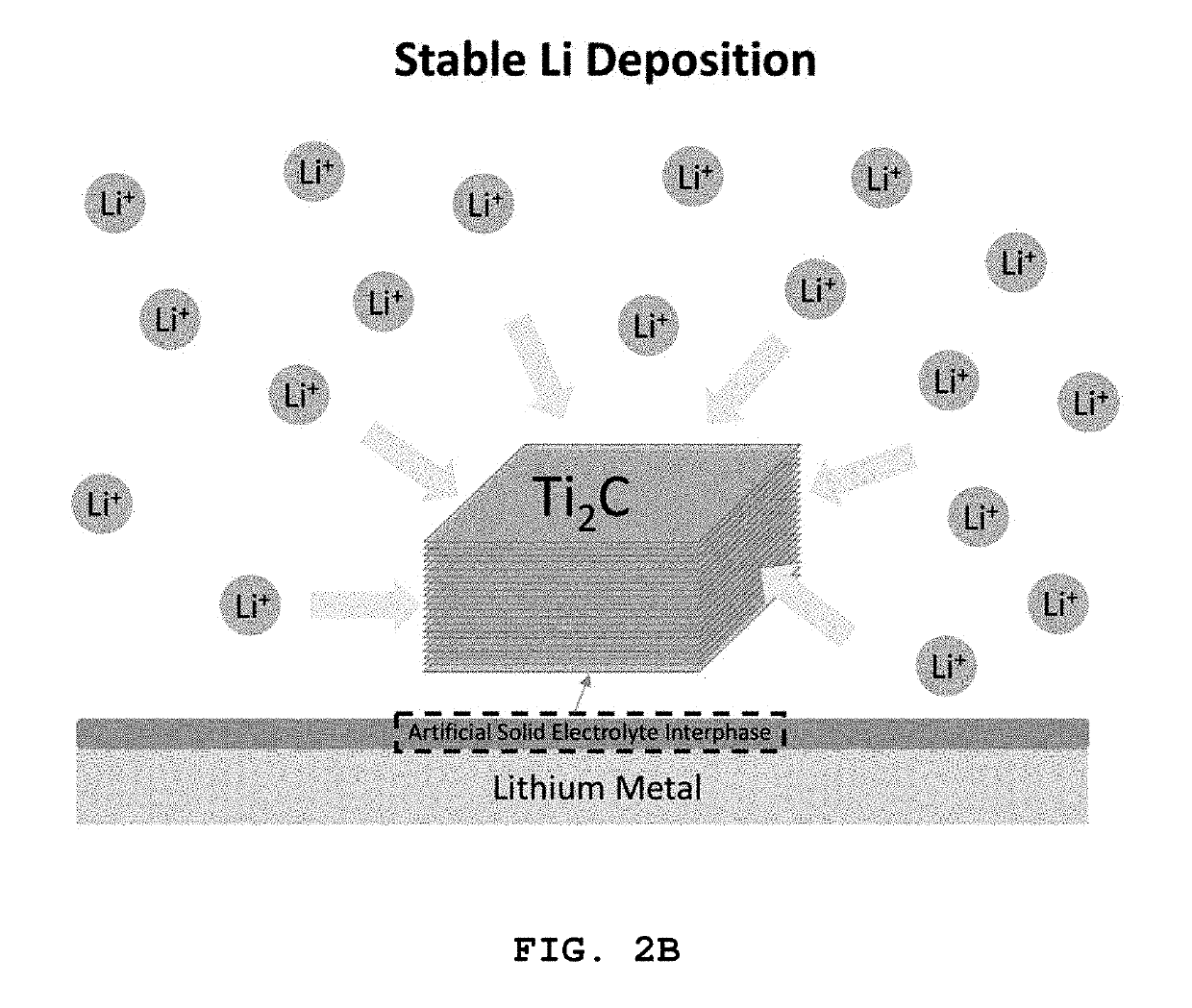Anode for lithium metal secondary battery including mxene thin film, method for producing the anode and lithium metal secondary battery including the anode
- Summary
- Abstract
- Description
- Claims
- Application Information
AI Technical Summary
Benefits of technology
Problems solved by technology
Method used
Image
Examples
preparation example 1-3
Preparation of Ti3C2
[0093]10 g of commercial Ti3AlC2 was mixed with 10 ml of hydrofluoric acid (48% in H2O). The reaction was allowed to proceed at room temperature for 1-7 days. When the Ti3AlC2 was etched for 3-4 days, Ti3C2 was optimally induced. The resulting Ti3C2 was washed 10 times with deionized water by centrifugation and dried in an oven at 80° C. to obtain a powder.
example 1-1
Production of Lithium Metal Electrode on which Nb2C Thin Film was Formed
(1) Formation of Nb2C Thin Film
[0094]The Nb2C particles (5-10 wt %) prepared in Preparative Example 1-1 were mixed with ethanol, followed by ultrasonic dispersion for 5 min. The resulting suspension was subjected to LBS coating to form a thin film of the Nb2C particles on a commercial copper foil as a substrate. Specifically, the suspension was added to water in which the substrate was immersed. When ˜30% of the water surface was covered with a self-assembled film of the Nb2C particles, the substrate was slowly lifted such that the self-assembled film formed on the water surface was coated on the substrate. The suspension was continuously added at a constant rate such that the self-assembled film was maintained constant on the water surface. The coated substrate was dried for ˜1 min on a hot plate maintained at 120° C. to remove water. This procedure was repeated 3-5 times.
(2) Transfer of the Nb2C Thin Film to L...
example 1-2
Production of Lithium Metal Electrode on which Ti2C Thin Film was Formed
[0096]A Ti2C thin film-transferred lithium metal electrode was produced in the same manner as in Example 1-1, except that the Ti2C particles prepared in Preparative Example 1-2 were used instead of the Nb2C particles prepared in Preparative Example 1-1. The electrochemical properties of the Ti2C thin film-transferred lithium metal were measured. The entire procedure was carried out in a dry atmosphere at an RH of 0-1% and an inert gas atmosphere.
PUM
 Login to View More
Login to View More Abstract
Description
Claims
Application Information
 Login to View More
Login to View More - R&D
- Intellectual Property
- Life Sciences
- Materials
- Tech Scout
- Unparalleled Data Quality
- Higher Quality Content
- 60% Fewer Hallucinations
Browse by: Latest US Patents, China's latest patents, Technical Efficacy Thesaurus, Application Domain, Technology Topic, Popular Technical Reports.
© 2025 PatSnap. All rights reserved.Legal|Privacy policy|Modern Slavery Act Transparency Statement|Sitemap|About US| Contact US: help@patsnap.com



